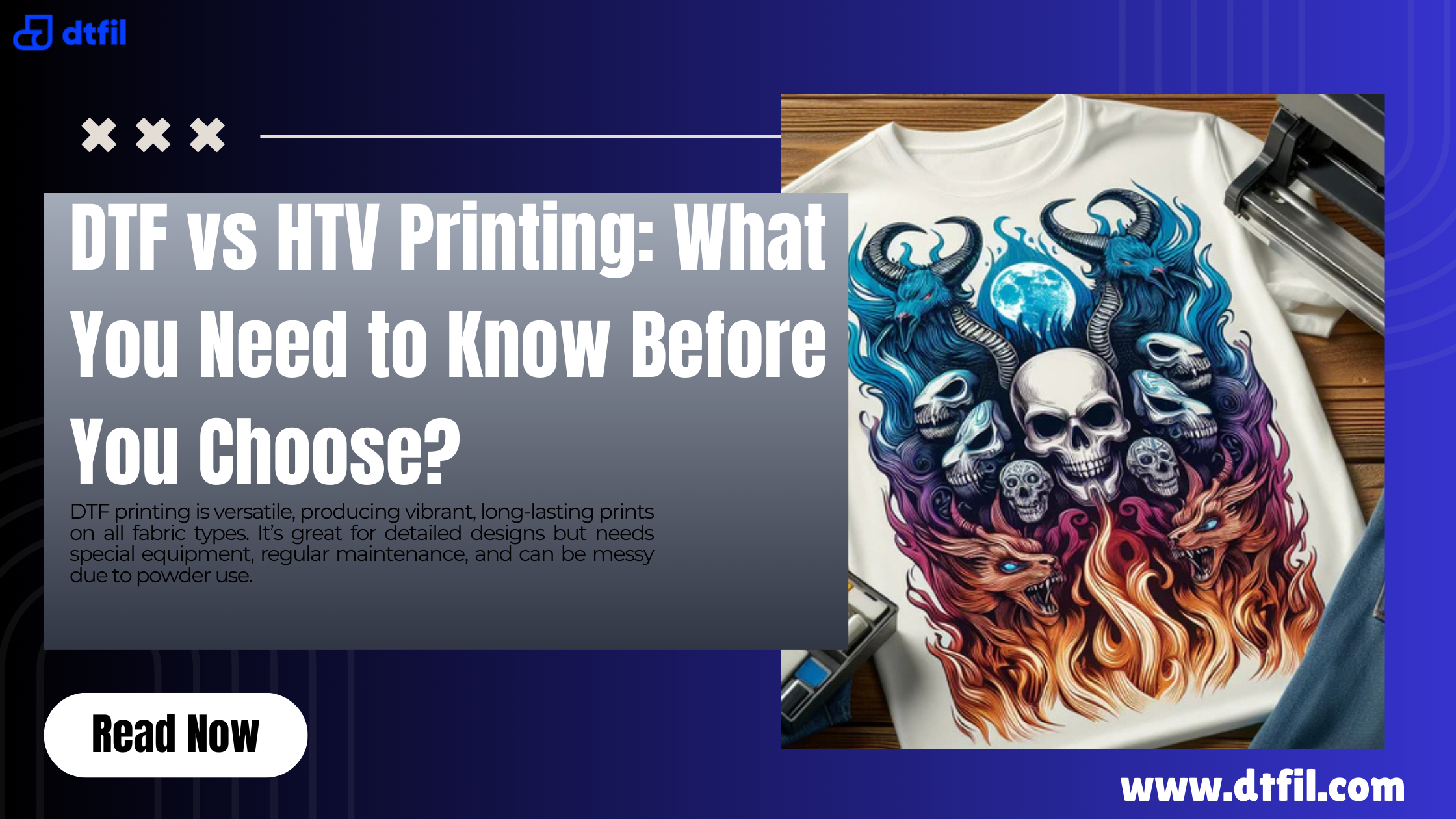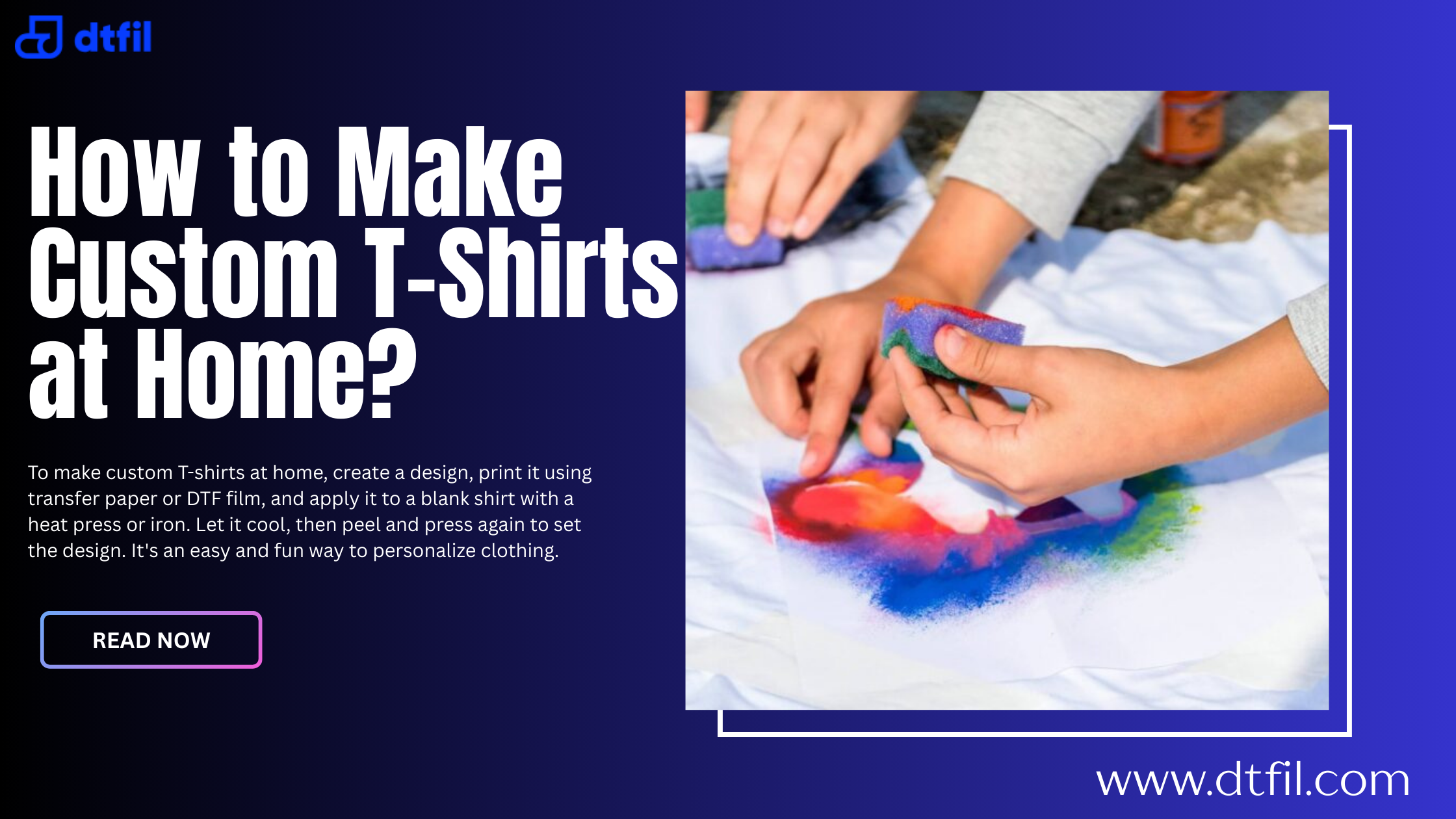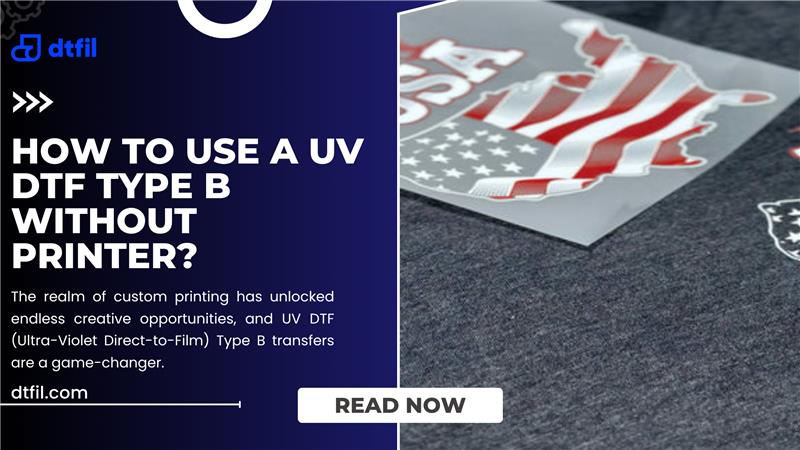DTF (Direct-to-Film) printing is known for its versatility, vibrant colors, and ability to work on various fabrics. However, one common issue users face is why is my DTF transfer not sticking.
Whether you’re a beginner or a seasoned printer, adhesion issues can be frustrating and costly. In this guide, we’ll dive deep into the common reasons why DTF transfers fail to adhere, how to fix them, and how to ensure your transfers bond with the fabric every time.
Understanding the DTF Printing Process
Before we troubleshoot, it's important to understand how the DTF printing process works. DTF involves printing a design onto a transfer film, applying hot-melt adhesive powder, curing it, and then transferring it to a garment using a t-shirt heat press.
Each step in this printing process must be performed correctly to achieve proper adhesion. If anything is off, from temperature and pressure to powder application, the DTF transfer not sticking to shirt becomes a real possibility.
Common Reasons Why DTF Transfers Are Not Sticking
Let’s look at the common reasons why DTF transfers are failing and how to fix each issue:
1. Uneven Heat or Incorrect Temperature
The most common cause of the DTF transfer not sticking is uneven or incorrect heat. A tee shirt heat press that doesn't distribute heat evenly can cause adhesion problems.
Solution:
-
Use a heat gun or infrared thermometer to test the press surface.
-
Ensure your press is set to the recommended temperature
-
Make sure the heat is even across all areas of the plate.
2. Incorrect Pressure Settings
Insufficient or excessive pressure can interfere with DTF transfer adhesion.
Solution:
-
Check manufacturer recommendations for pressure settings.
-
Medium to firm pressure is generally ideal for most DTF transfers.
-
Perform regular pressure calibration on your heat press.
3. Cool Peel vs. Hot Peel Timing
DTF transfers require a specific peeling temperature. Peeling too early or too late can result in dtf transfers not sticking.
Solution:
-
Most DTF films are cool peel. Wait until the transfer is completely cool before peeling.
-
Always check the product label on your transfer paper for shirts.
4. Poor Quality or Improper Powder Application
Inconsistent or insufficient adhesive powder will prevent the transfer from sticking properly.
Solution:
-
Apply the adhesive powder evenly.
-
Shake off excess powder.
-
Ensure it’s fully cured before pressing.
5. Moisture in the Garment or Film
Moisture is the enemy of DTF transfer adhesion and can cause adhesion issues.
Solution:
-
Always pre-heat the substrate for 10–13 seconds before applying the transfer.
-
Store your transfer film and garments in a cool, dry place to prevent moisture buildup.
Also Read: What Temp Do You Press DTF Transfers? A Complete Guide
Substrate MattersFor DTF Transfers: Fabric Type and Condition

Not all fabrics respond the same way to DTF printing. Some synthetics or heavily textured fabrics can cause the DTF print not sticking.
Solution:
-
Use 100% cotton, cotton blends, or polyester for best results.
-
Ensure fabric is clean, dry, and wrinkle-free before pressing.
-
Avoid applying transfers on seams or uneven areas.
Environmental Conditions and Storage
Environmental conditions like humidity and temperature fluctuations can affect how well a transfer adheres.
Solution:
-
Store DTF transfers in airtight containers with desiccant packs.
-
Avoid working in humid environments.
-
Always keep your UV DTF sticker or UV DTF sticker paper protected from air exposure.
Special Note on UV DTF Stickers
If you're working with UV DTF sticker or UV DTF sticker paper, the process differs slightly. UV DTF involves printing directly onto a film with UV ink and transferring the sticker to hard surfaces. Adhesion failures here are typically due to dirty surfaces or low-tack film.
Solution:
-
Clean surfaces thoroughly.
-
Apply even pressure when transferring.
-
Use only on compatible surfaces like plastic, metal, and glass.
Tips to Ensure Proper DTF Adhesion Every Time

Whether you're producing custom shirts for a brand or fulfilling personal orders, these tips will ensure your DTF prints adhere flawlessly every time:
-
Always pre-press your garments: This removes moisture and smooths the fabric surface, creating the optimal environment for adhesion. Press for 5–10 seconds at 300°F before applying your DTF film.
-
Use high-quality supplies: Investing in high quality DTF transfers, film, ink, and powder is essential. Inferior materials often cause dtf transfer not sticking problems, even when your technique is perfect.
-
Apply adhesive powder evenly: Uneven powder can lead to patchy bonding. After sprinkling the powder over the film, shake it thoroughly and tap off any excess before curing.
-
Cure adhesive powder properly: Curing time and temperature are critical. Use a heat gun, curing oven, or conveyor dryer to cure the adhesive layer until it forms a glossy, crystallized finish — this ensures it will melt and bond with the fabric during transfer.
-
Peel at the right time: DTF is typically a cool peel process. Don’t rush it. Let the film cool completely before peeling to avoid lifting or tearing the print.
-
Apply the right pressure and heat: For best results, use medium to firm pressure with your tee shirt heat press at the recommended temperature 300-315 for about 10–13 seconds. Check that the pressure is evenly distributed.
-
Store DTF materials correctly: Improper storage can degrade film and powder quality. Keep your transfer film and unused transfers in an airtight container in a cool, dry space, away from direct sunlight and moisture.
Conclusion: Improving Quality With DTFIL
If you're still wondering why is my dtf transfer not sticking, the answer often lies in attention to detail. At DTFIL, we know that consistent, vibrant, and durable DTF prints depend on each step of the process being executed flawlessly.
We have emerged from a vision to address a gap in the printing industry. Where others perceived challenges, we recognized opportunities — opportunities to redefine quality, precision, and customer satisfaction in the Direct-To-Film printing realm.
Visit us to make your printing game durable and vibrant!
FAQs
1. Why isn't my DTF transfer sticking to my shirt?
Improper heat, pressure, moisture in the fabric, or uneven powder application are the most common reasons your DTF transfer may not be sticking properly.
2. How to make DTF transfers stick better?
Ensure correct temperature, firm pressure, even powder curing, and cool peeling. Pre-press the shirt and store materials in a dry, controlled environment.
3. Can you overheat DTF transfers?
Yes, overheating can cause the adhesive to break down, resulting in poor bonding or a burned look. Always follow recommended temperature guidelines.
4. Why are my DTF transfers peeling?
Peeling is usually due to undercured adhesive, incorrect peel timing, low-quality film, or not enough pressure or heat during pressing.
5. Why Is My DTF Transfer Not Sticking to the Substrate?
Moisture, fabric texture, or contamination can prevent adhesion. Ensure the surface is clean, dry, and compatible with DTF materials before pressing.
6. How Can I Properly Pre-Heat the Substrate?
Use your heat press to pre-press the fabric at 300-315°F for 10–13 seconds. This removes moisture and smooths the surface for better transfer adhesion.
7. What Can I Do If I Am Using High-Quality Powder or Ink, and My DTF Transfer Is Still Not Sticking?
Recheck press temperature, powder curing, and environmental conditions. Even good materials fail with wrong settings or excess humidity.
8. Can Environmental Factors Affect the Sticking of DTF Transfers?
Yes, high humidity or cold temperatures can cause moisture buildup or inconsistent adhesion. Always work in a dry, climate-controlled area.
Also Read More Related Blogs: How to Apply UV DTF Wraps?
How to Apply UV DTF Wraps?








